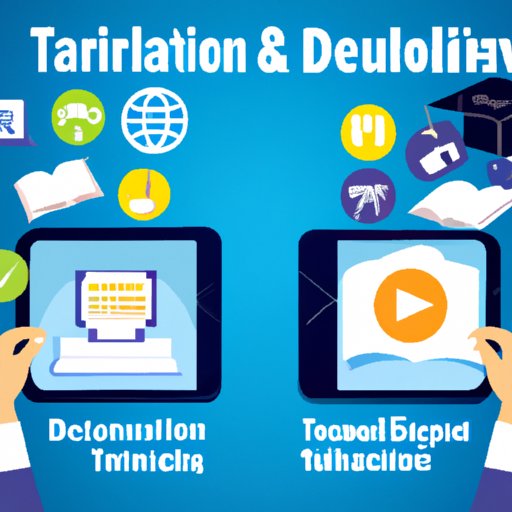Introduction
Technology has become an integral part of our lives and has had a profound impact on how we live, work, and play. As technology continues to evolve, it is also transforming education and changing the way students learn. Technology in education has become increasingly popular as it offers numerous benefits such as increased engagement, improved access to quality education, and enhanced research and collaboration.
Technology Improves Student Engagement in the Classroom
One of the main benefits of using technology in the classroom is that it can help increase student engagement. With technology, teachers can create interactive lessons that are engaging and interesting for students. Technology-based activities can be used to bring lessons to life, making them more memorable and easier to understand. This type of interactive learning can also help foster critical thinking skills and encourage students to take ownership of their own learning.
There are many ways in which technology can be used to engage students in the classroom. For example, teachers can use educational software to create interactive games and activities or use virtual reality to bring lessons to life. Additionally, teachers can utilize video conferencing tools to connect with other classrooms around the world or use online platforms to facilitate group discussions and projects.

Increase Access to Quality Education
Another benefit of incorporating technology into the classroom is that it can help increase access to quality education. Blended learning models, which combine traditional instruction with online learning, can provide students with more flexibility and choice when it comes to their learning. By utilizing online resources, teachers can supplement their instruction and offer students additional support and guidance. Furthermore, online tutoring services can provide students with personalized attention and help them stay on track with their studies.
Blended learning models also allow teachers to reach a wider audience and offer courses to students who may not have access to traditional classrooms. This can help bridge the digital divide and ensure all students, regardless of their location or financial situation, have access to quality education.
Bridging the Digital Divide
The digital divide refers to the gap between those who have access to technology and those who do not. Technology can help bridge this gap by making education more accessible to all. By providing students with access to computers, tablets, and other devices, they can gain access to educational resources that would otherwise be out of reach. Additionally, technology can provide students with access to online courses and resources that can help them continue their education even when traditional classrooms are not available.
Furthermore, integrating technology into the classroom can help level the playing field and make learning more equitable for all students. By utilizing digital tools, teachers can tailor instruction to meet the needs of individual students and ensure everyone has an equal opportunity to succeed.

Technology Enhances Research and Collaboration
In addition to improving student engagement and increasing access to quality education, technology can also be used to enhance research and collaboration. With technology, students can easily access information from around the world and use it to conduct research and develop projects. Digital tools can also be used to facilitate group discussions and projects, allowing students to collaborate with one another in real time.
By leveraging technology, students can also join virtual communities where they can share their ideas and get feedback from peers. These communities can help foster collaboration and provide students with a platform to showcase their work and receive constructive criticism.
Virtual Reality for Teaching
Virtual reality (VR) is another technology that is being used in the classroom to create immersive learning experiences. VR can be used to transport students to new worlds and give them a firsthand look at what they’re studying. For example, students can use VR to explore historical sites or visit different countries without ever leaving the classroom.
VR can also be used to teach complex topics in an engaging and interactive way. For example, medical students can use VR to practice surgery or diagnose patients, while engineering students can use VR to design and build 3D models. VR can also be used to simulate real-world scenarios, allowing students to practice problem-solving and hone their decision-making skills.
Conclusion
Technology can be a powerful tool for transforming education and improving student outcomes. From increasing student engagement in the classroom to bridging the digital divide, technology can help make education more accessible and equitable for all. Additionally, technology can enhance research and collaboration, and provide students with immersive learning experiences through virtual reality. Ultimately, technology can be a powerful tool for improving education and helping students reach their full potential.
(Note: Is this article not meeting your expectations? Do you have knowledge or insights to share? Unlock new opportunities and expand your reach by joining our authors team. Click Registration to join us and share your expertise with our readers.)
